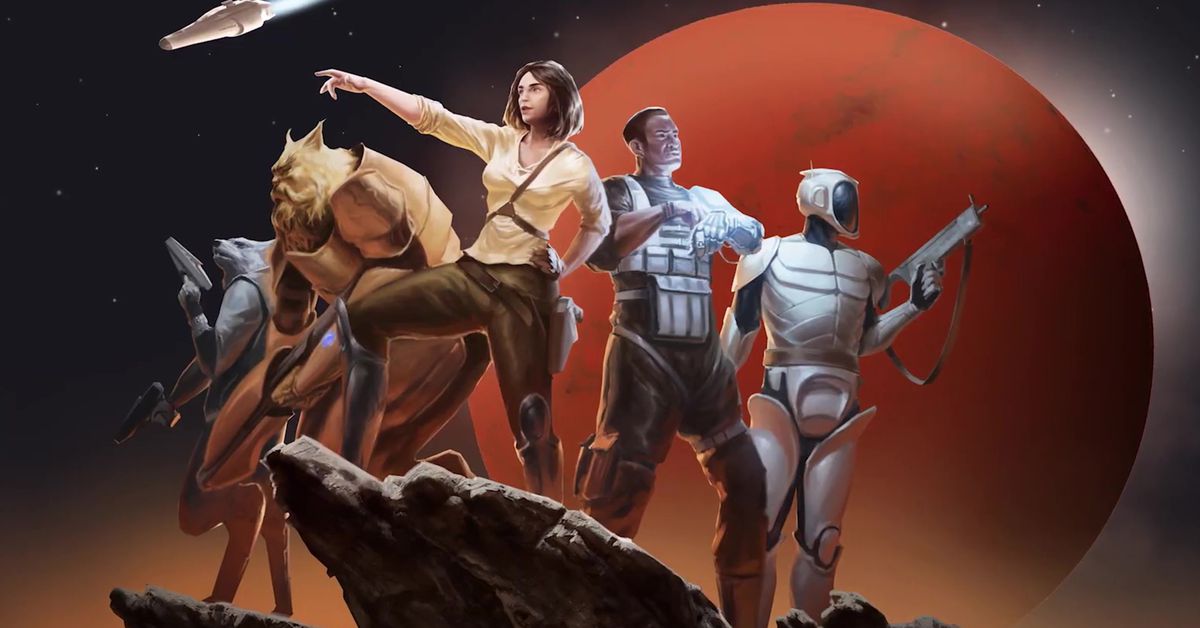
After more than two decades making fantasy role-playing games and reimagining the Fallout universe, Bethesda Softworks is finally branching out. Starfield is an ambitious space opera that promises over 1,000 worlds to explore. It’s a tale full of adventure, discovery, wonder, and maybe — just maybe — a touch of the divine. But, to hear director and executive producer Todd Howard tell it, the new science fiction epic wouldn’t be the same without the influence of Traveller, the seminal pen-and-paper tabletop role-playing game.
First published by Game Designers’ Workshop in 1977 — just three years after the birth of Dungeons & Dragons — Traveller is still played today. ProSpelare spoke with several historians about the nature of the game, its origins in tabletop wargaming, and the long shadow it casts in the worlds of video game and tabletop design.
“A lot of people wonder what would happen if Dungeons & Dragons didn’t exist,” said Stu Horvath, founder and publisher of Unwinnable, in an interview with ProSpelare. His book, Monsters, Aliens, and Holes in the Ground: A Guide to Tabletop Roleplaying Games from D&D to Mothership is due out in October from MIT Press. “Would role-playing games still happen?
“I think that role-playing games were sort of inevitable,” Horvath continued. “I think that there were a lot of moving parts in the field at the time that were driving toward this sort of game, and I think that if TSR didn’t do it (then) Game Designers’ Workshop would have probably (made) the first role-playing game with Traveller.”
Traveller takes place in humanity’s distant future, where ambitious entrepreneurs and adventurers make their way among the stars. The game itself is open-ended, with players free to roam a galaxy of their own making. Mechanically, it shares almost nothing in common with D&D — outside of initially being published as three small chapbooks.
“It is the first role-playing game that came out that is from just a different design lineage from Dungeons & Dragons,” Horvath said. “Everything else up to that point is strictly derivative of D&D. (…) It’s a hack. Traveller comes and it is completely new, and if you look at that black box, it’s really different from everything else that’s out there.”
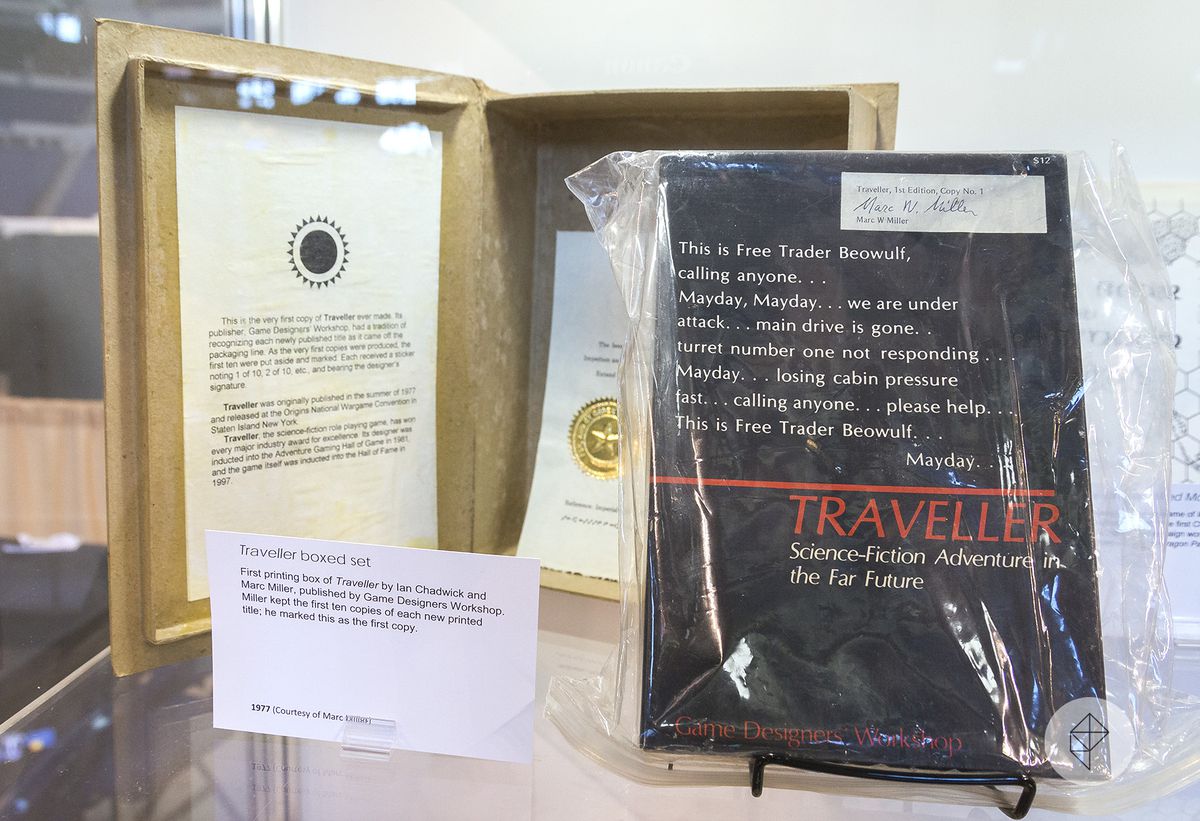
The first printed copy of the core sourcebook for Traveller, as shown in 2017 at the 50th Gen Con’s anniversary museum. The exhibit, hosted on the floor of Lucas Oil Stadium in Indianapolis, was co-curated by Jon Peterson.
Photo: Charlie Hall/ProSpelare
At its core, Horvath said, Traveller is a very easy-to-learn ruleset. When TSR was trying to wrap players’ heads around what THAC0 meant, GDW just wanted you to roll a few of the six-sided dice that you probably already had just lying around the house.
“It’s a really simple system,” he said. “It’s just two d6. You roll them. You total them. You have modifiers in both directions, and you’re just looking to beat an eight. That’s it. That’s the whole resolution system.
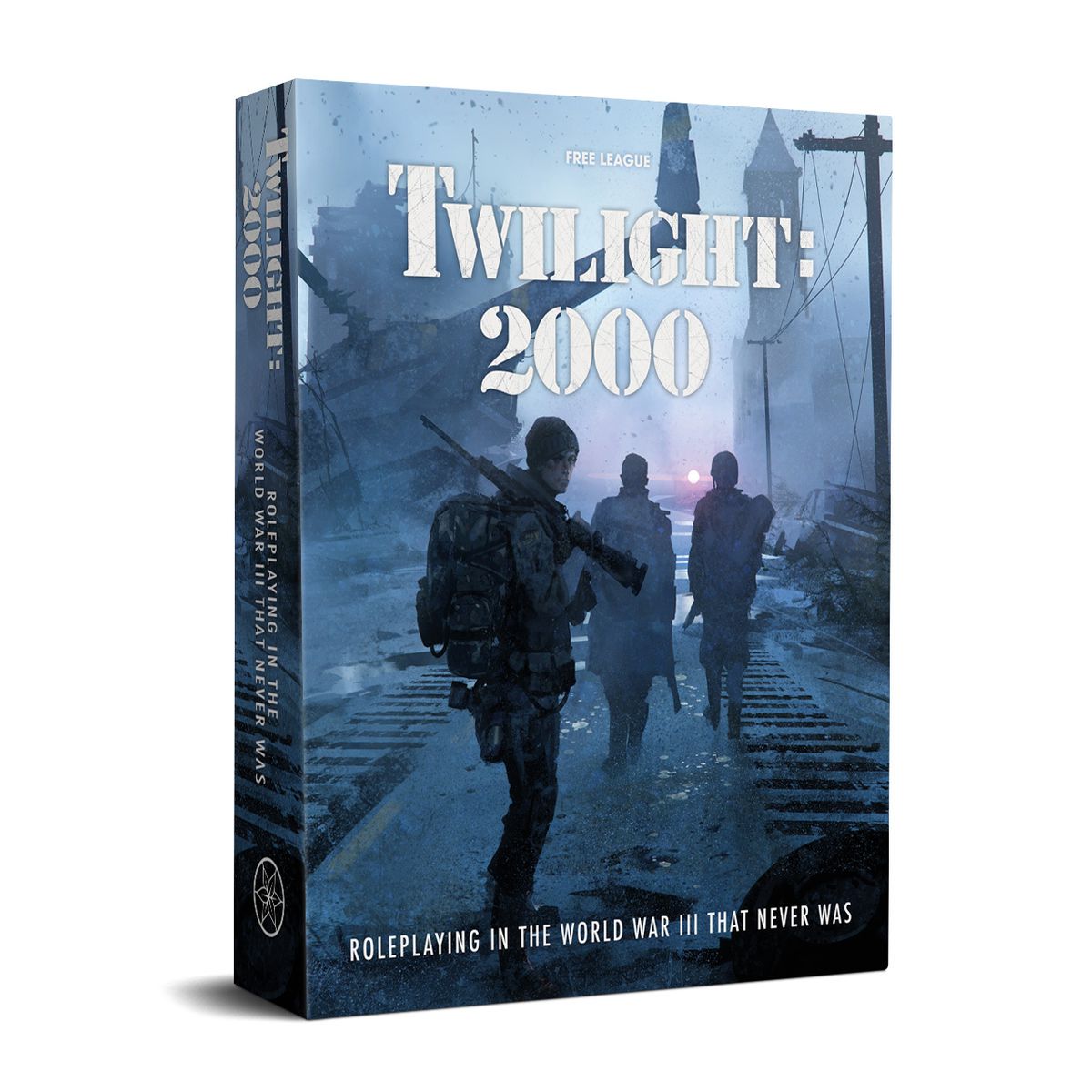
Image: Free League Publishing
“It is so feather light,” Horvath continued. “If you read the original rules, it has so much more in common with modern rules-light design theory than it has with anything else that is before or immediately after it in the late ’70s. It’s just a fantastically light game.”
That system allowed the team at GDW to do inspiring things with character design. The main conceit of Traveller’s character creation system is that each and every player at the table has had a full and exciting life prior to showing up to game night. Players roll against a series of tables that simulate either their military experience or their time as a kind of interstellar merchant marine. Along the way they pick up the skills that make them viable and interesting characters to play at the table. It’s a style of character creation still embraced by successor games, as showcased by Free League Publishing’s elegant remaster of Twilight: 2000.
“You’re signing your character up for tours of duty,” Horvath said. “Then you kind of roll through a couple options and tables that will develop, that give you skills. So you might get gambling from your downtime, or (weapon skills from learning) ships’ gunnery. You also might see action and get killed before you actually play the game.”
The game’s other legacy, explained Jon Peterson, the bestselling author of Game Wizards: The Epic Battle for Dungeons & Dragons, is its emphasis on starship construction and exploration. That fixation, he said, comes from Game Designers’ Workshop’s experience in “space empire games” — sprawling, complex wargames gaining popularity around the same time.
“GDW was a traditional wargaming company that clearly just got hit by the train that was D&D,” Peterson told ProSpelare. “After Star Trek came out in 1966 there were a bumper crop of games that were in science fiction fandom. And science fiction fandom was, at that point, already pretty tightly integrated with Diplomacy fandom and, in particular, with the people who played like postal Diplomacy.
“War of the Empires by Tullio Proni is a game, incidentally, Gary Gygax played and was engaged in as early as 1966 and indeed did his own revision to it in 1969,” Peterson said. “And these games were really kind of focused on the idea that you had multiple alien species, usually including humans, that were exploring some kind of a star system. They were, you know, these were the precursors, I argue, to 4X games very explicitly. You would find a planet, you would mine it for resources, you would use that to build more ships. And then, after it had been colonized, you then spread out more scout ships, find more places to colonize. That whole colonization narrative emerged, and it’s quite an early game scene.”
“It’s about travel. It’s about exploration. It’s about seeing what the galaxy holds for you”
“Traveller isn’t very much interested in combat,” Horvath said. “Combat’s there, but combat gets you killed. And then your character is dead. And, you know, that’s not the point. It’s about travel. It’s about exploration. It’s about seeing what the galaxy holds for you. It has a whole different set of concerns. All of that is built into the character creation. You can just play Traveller and be traders — merchantmen — and that’s cool and different.”
Another unique aspect of Traveller is its universe generation system, a kind of proto-procedural generation that gives detail to entire sectors of space with just a few rolls of the dice.
“I will be able to roll to determine whether this particular hex has a world in it and if so, what planetary system that is associated with that world,” Peterson said. “Then I’ll be able to roll for what tech level that is, and what you’re likely to find if you’re going to explore this. You generate these sub-sectors, and then players playing their individual characters may be teamed up with some starship pilot (and) make their way to these places and can have adventures in them as they explore.”
That system would later go on to directly inspire the sophisticated celestial rock tumbler at the heart of the spacefaring game Elite Dangerous, which includes a realistic depiction of all 400 billion stars in our Milky Way galaxy.
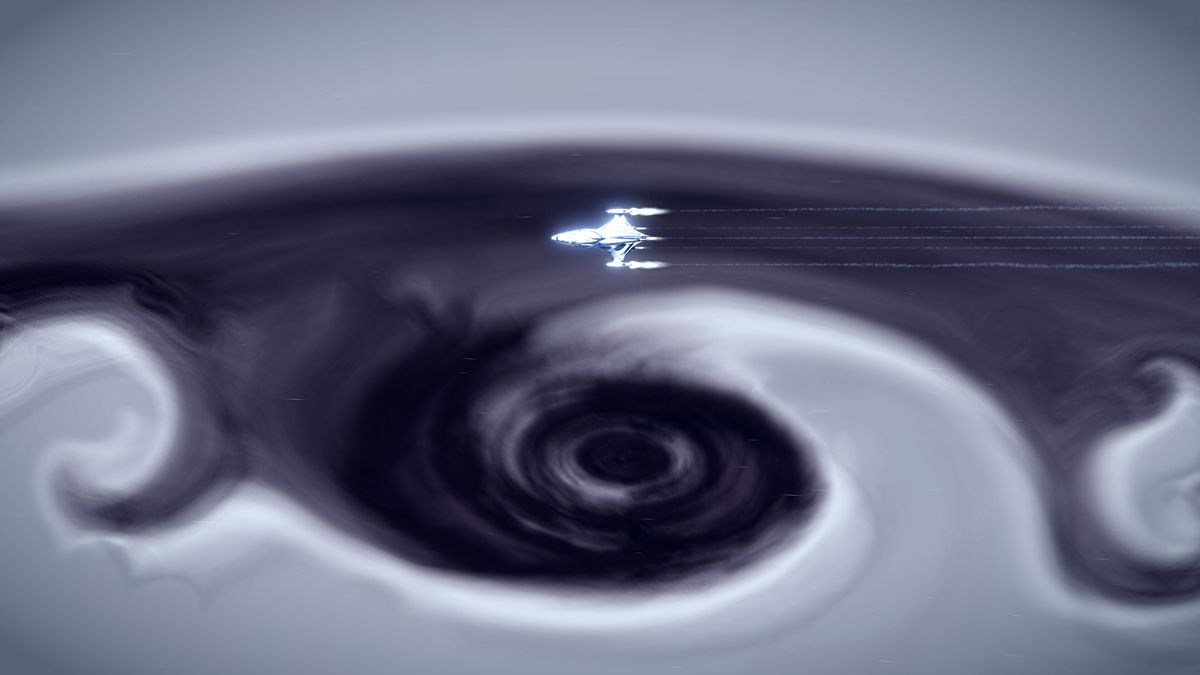
An award-winning photo from the Distant Worlds 2 expedition in Elite Dangerous.
Image: Commander Lorin Arsin
But perhaps the biggest impact that Traveller would have on gaming writ large is the concept of an ongoing campaign. D&D and other early role-playing games were originally experienced very much as one-off, adversarial events with judges (called referees) adjudicating the action from round to round. It was more about surviving a meat grinder than telling a compelling story. Traveller would change all that, and alter player expectations of the TTRPG industry forever.
“Traveller (is among the first games that) distinguishes between a scenario and a campaign, I think very specifically,” Peterson said. “It says you can play Traveller just as a single scenario. But, you know, if you do, people just seem to love the characters that survive these things and they want them to be involved in future actions. They identify with them, and that is why there is also a campaign mechanic in Traveller.”
It was also among the first games to truly set players loose to tell their own stories, in their own words.
“But there’s no prescription that the campaign has to be about anything, or if there’s any particular secret force pulling the strings — other than the referee, of course, who is always pulling the strings in these games,” Peterson said. “At least in its earliest, in its 1977 version, you don’t really get much of a sense of what (the story of Traveller is), because it’s really up to the players to sit around the table and to ask what kind of a game they want to have.”
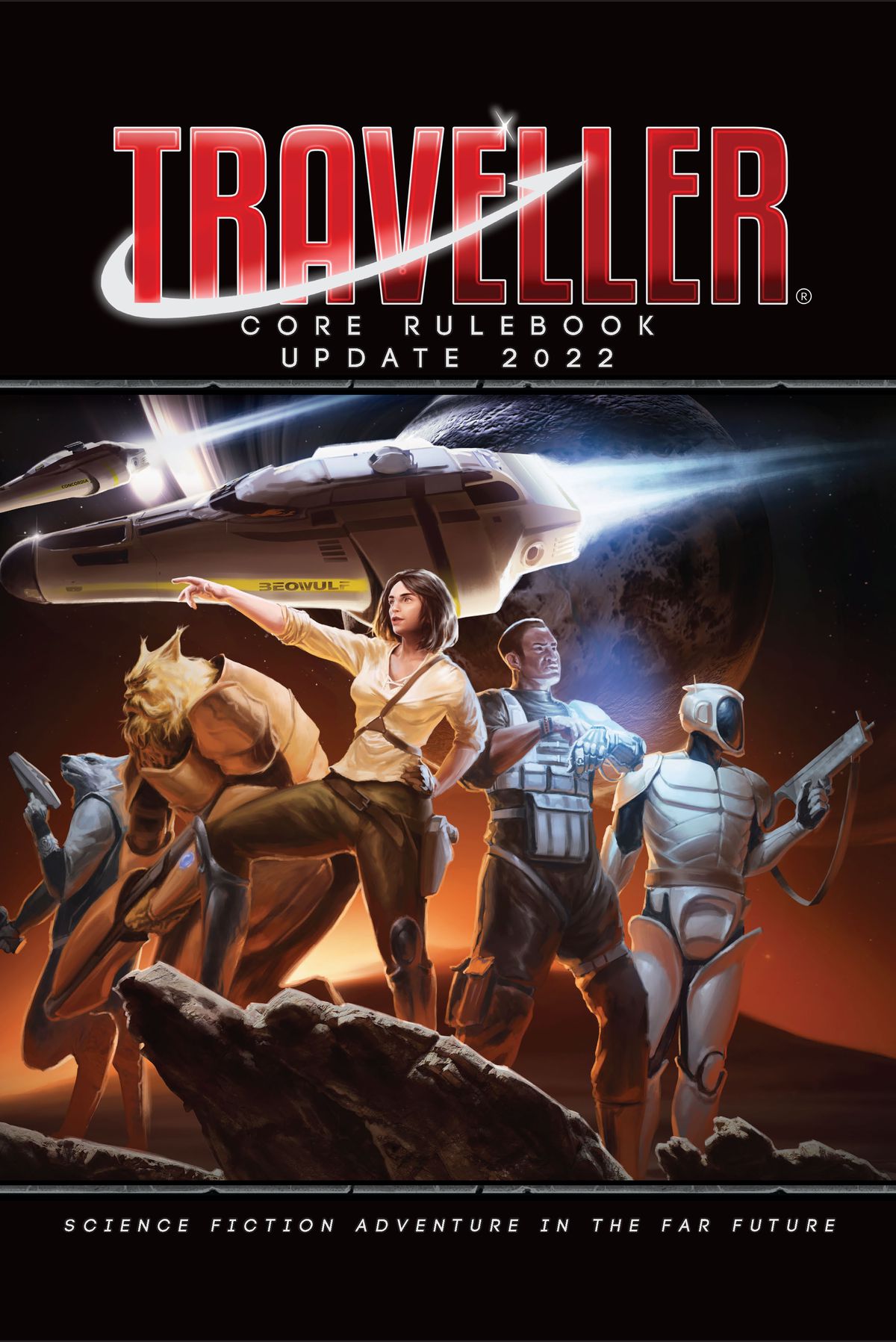
Image: Mongoose Publishing
Of course, later versions of Traveller did impose their own lore. Its modern-day storyline is set during the age of the Third Imperium, a feudal confederation of loosely aligned worlds, and the many different factions spread out among them. That rich vein of lore is being mined today by the team at Mongoose Publishing, which still creates and sells new content for fans of Traveller.
“When we came along,” said Mongoose co-founder Matthew Sprange, “we basically took the core mechanics of the original Traveller and polished them up a bit, made them a bit more friendly for the 21st century. (…) Mechanically, it’s very similar, but it’s a lot smoother to run now. In terms of the Traveller universe, we’ve gone a lot heavier into storylines. So whereas before, you had like a 16- or 30-page odd adventure that were very bare bones. Now we’ve got these epic, sprawling campaigns that might take you two or three years to play through in real time.”
The most popular of those new campaigns, Sprange said, is called The Pirates of Drinax, which is sold as both a PDF and as a three-volume, collectible slipcase edition.

Image: Mongoose Publishing
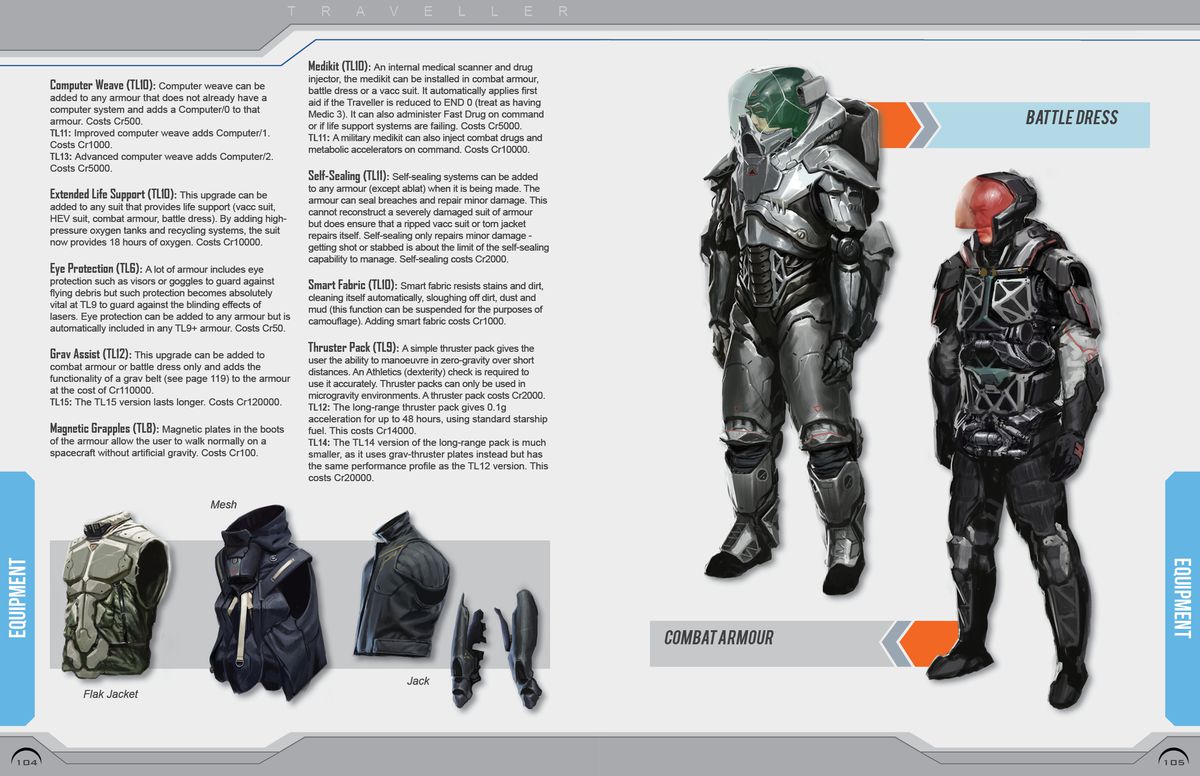
Image: Mongoose Publishing
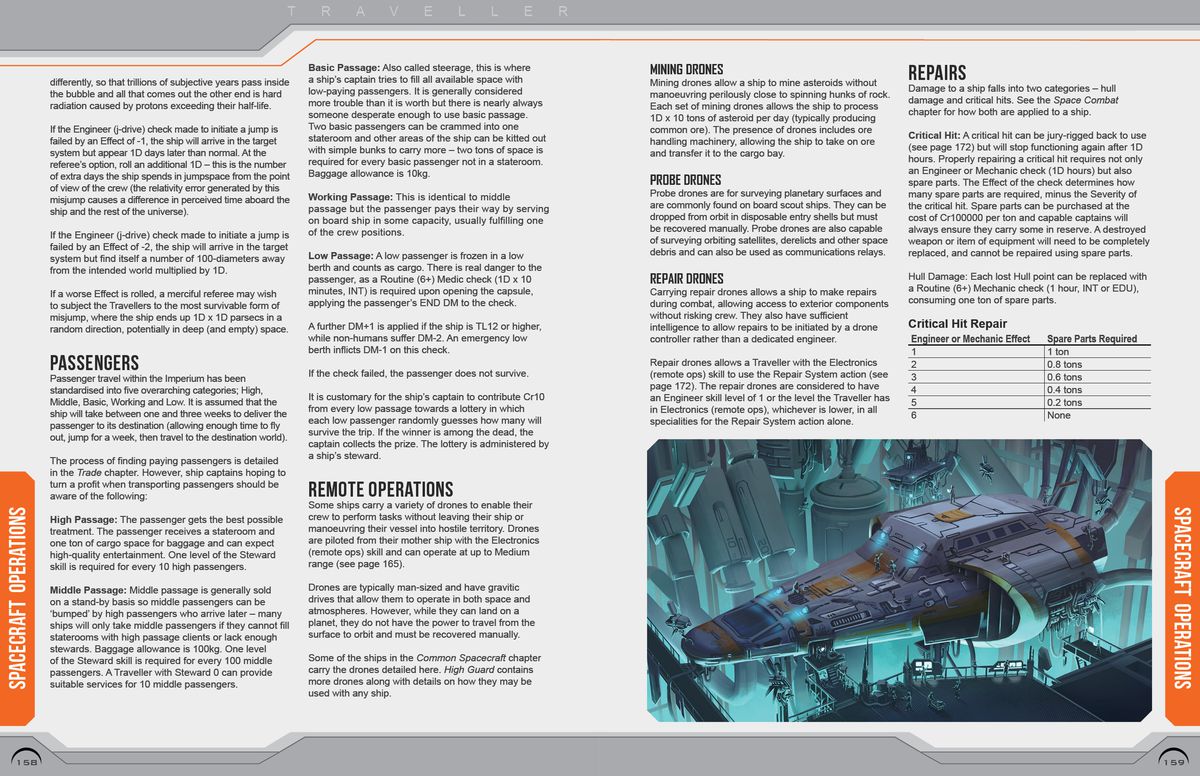
Image: Mongoose Publishing
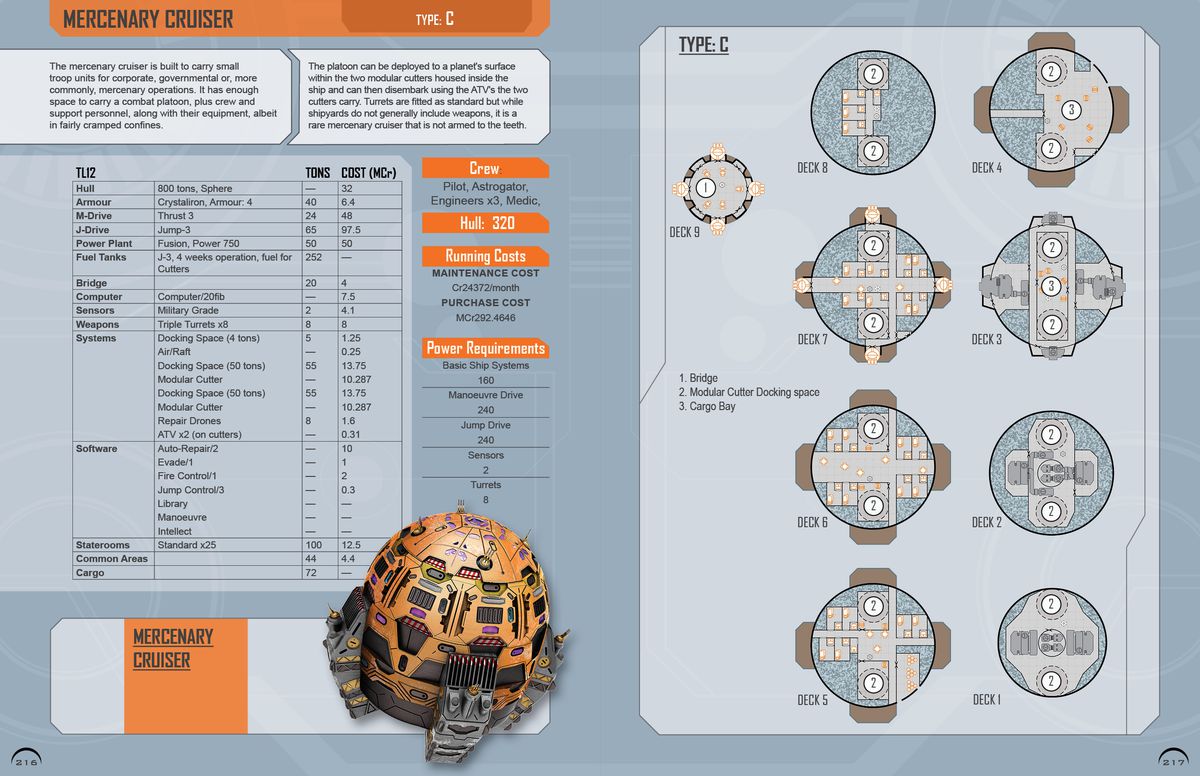
Image: Mongoose Publishing
“At its core, (modern-day Traveller) is (the) age of sail in space,” Sprange said. “The distances are large. There’s no faster-than-light communication, everything travels at the speed of spaceships. So if a war breaks (out) inside of an empire, the capital isn’t going to hear about it for months. And of course, it takes months to make a response to that.”
“If you think of it along the lines of Grand Theft Auto,” Sprange continued, “you’ve got a storyline running all the way through it.”
Of course, the original Traveller, now dubbed Classic Traveller, for ease of comparison, is still available for sale today. For far less than the price of Bethesda’s next massively single-player game, you could experience one of the most influential TTRPGs of our time by building a galaxy and making it your own — just like a baby-faced Todd Howard did so many decades ago.
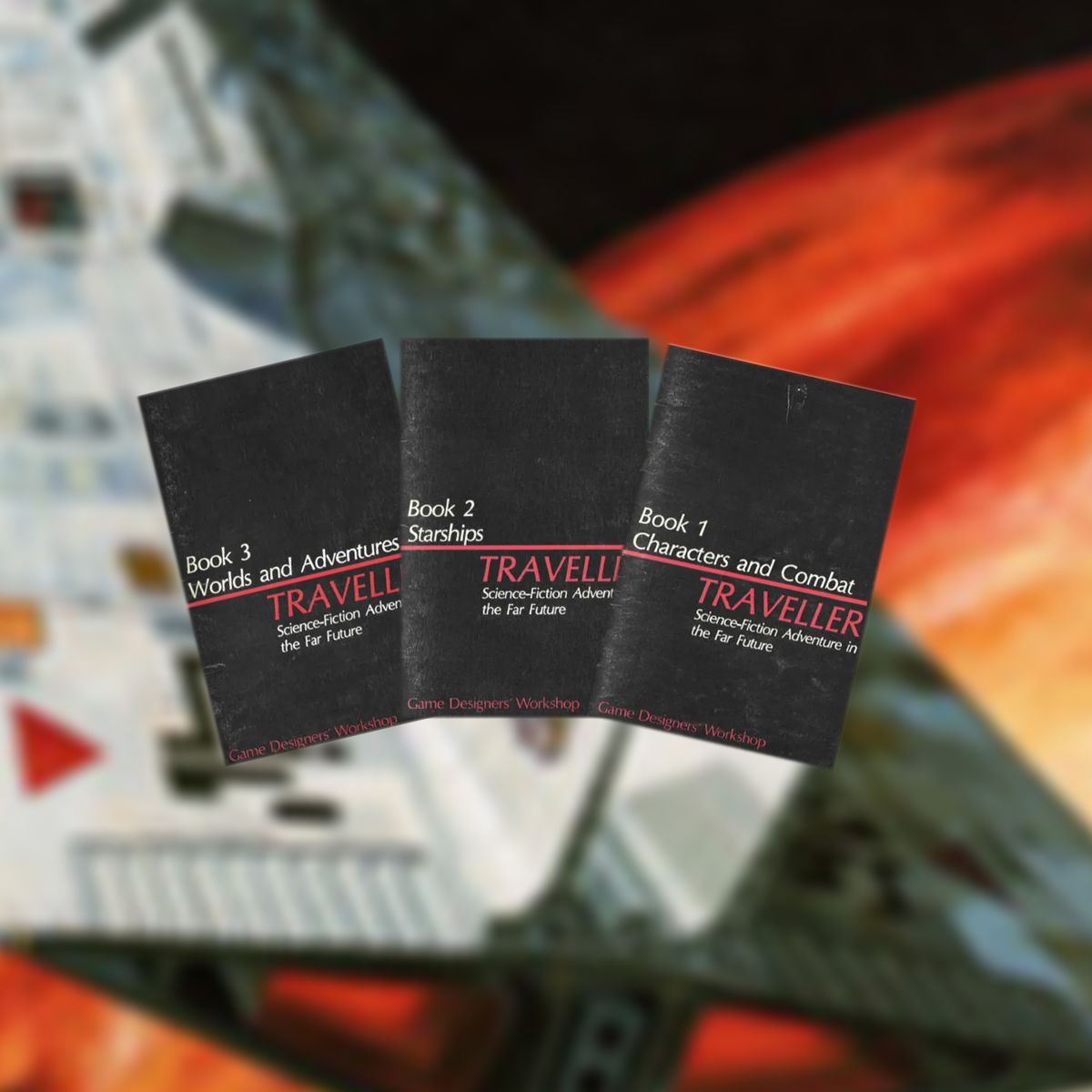
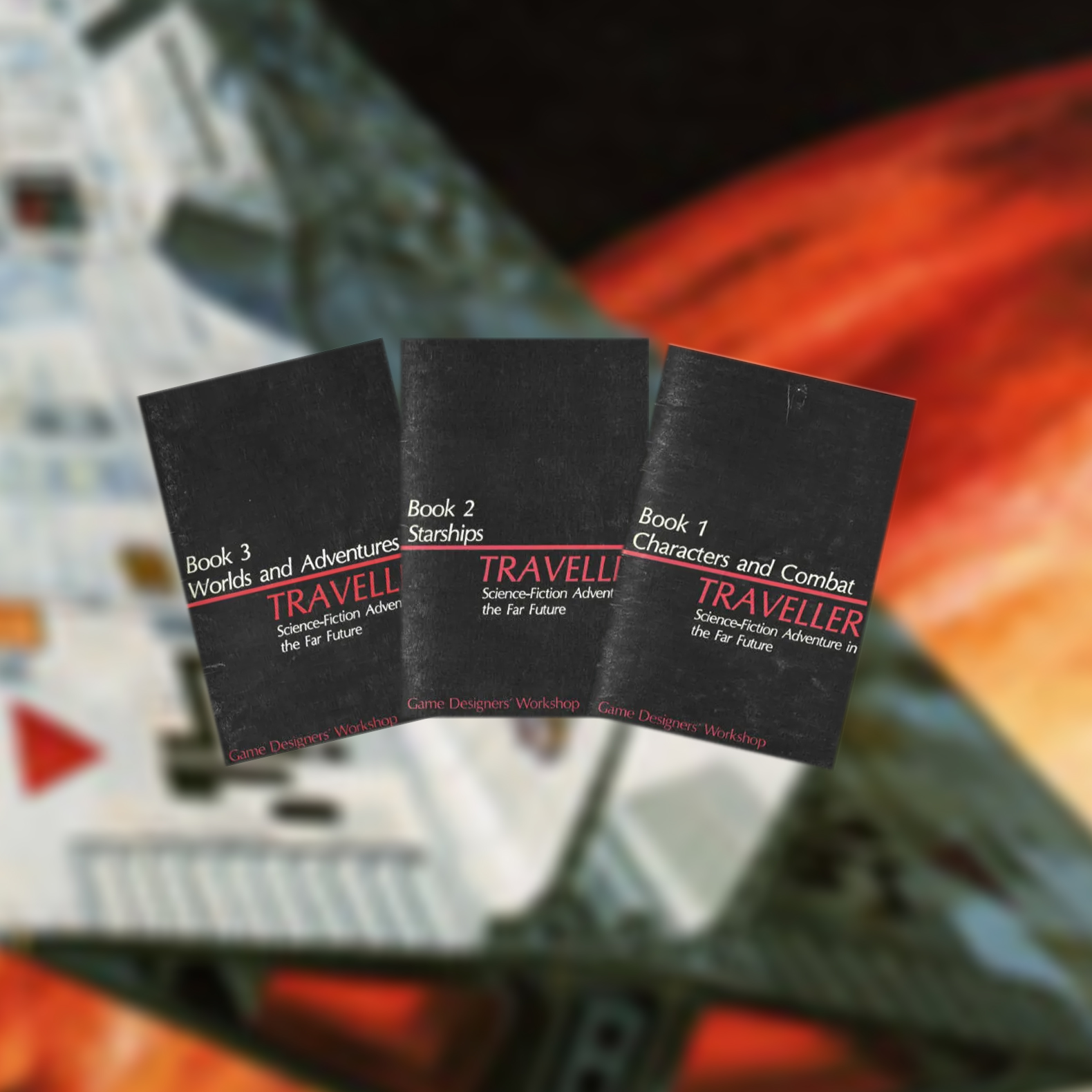
Traveller Core Rulebooks
- $6
Prices taken at time of publishing.
-
$6
at DriveThruRPG (book 1)
-
$6
at DriveThruRPG (book 2)
-
$6
at DriveThruRPG (book 3)
